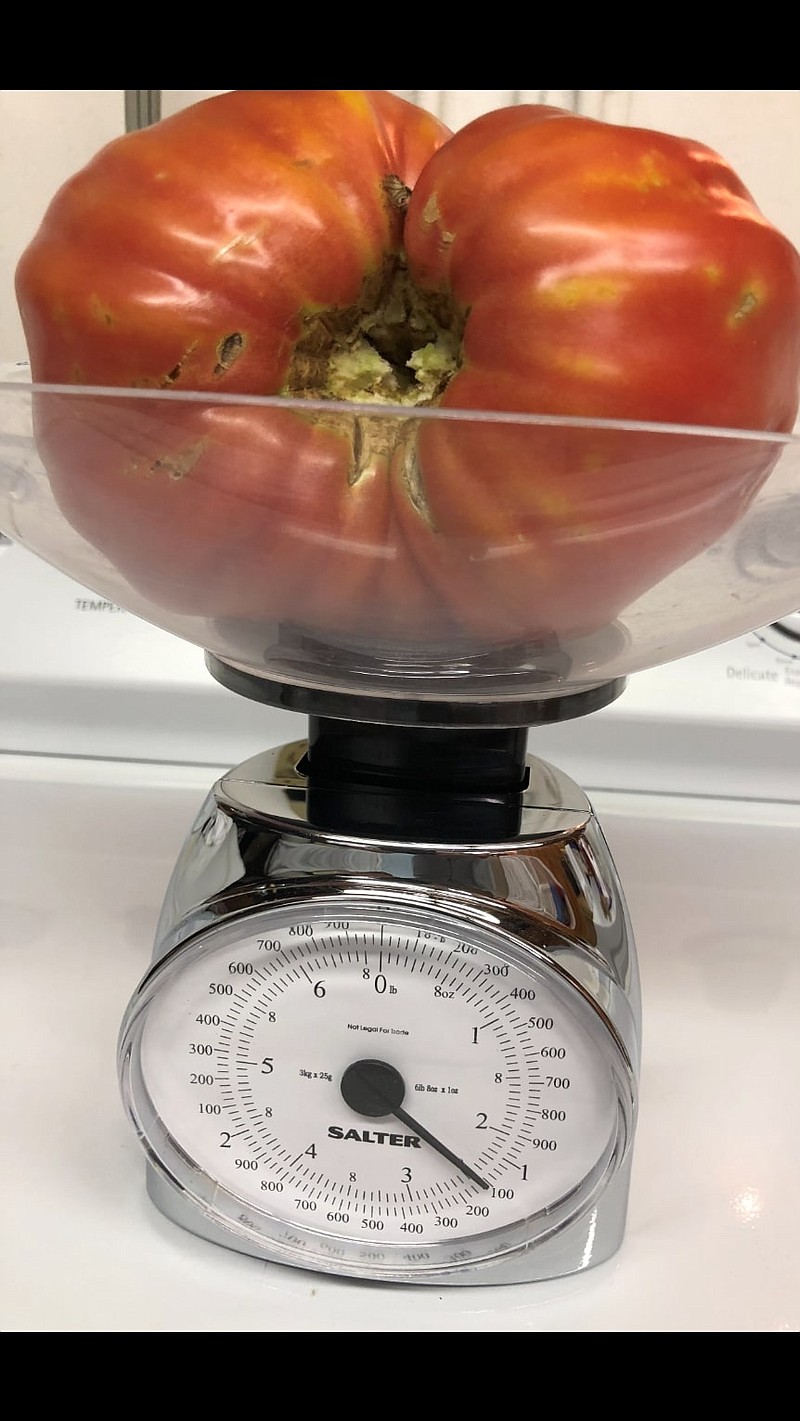Q. I saw the photo of a tomato in a prior column, and wanted to show one I grew that is even larger, weighing 2 pounds 8 ounces. It was from an heirloom tomato plant called OxHeart. I got the plant from a friend who grew it from seed.
A. Fantastic. Thanks for sharing, and with the late summer heat, maybe another large tomato will surface. For now, that is the largest reported in the Jefferson City area.
Q. I have this big dead patch in my Zoysia lawn. It seems to be getting larger every year, started just two or three years ago. What might it be and can something be done to stop it? My Zoysia lawn is about 10 years old and has been great; I haven't done anything to it over the years except mow and fertilize it.
A. Your problem is likely the common disease of Zoysia known as "large patch." It is best prevented by dethatching the lawn, but you should wait until early June to do this. It would be very important to do this and also do it correctly. Meanwhile, you should apply a fungicide, with late September to mid-October being a critical time. Find a fungicide labeled for turf with either Zoysia patch or large patch listed as being controlled. Examples are Heritage Fungicide and Scotts Disease EX Lawn Fungicide. Applying this fungicide again in late April would be beneficial. The reason to wait to dethatch until June, is dethatching now can spread the disease. Another reason is Zoysia should be actively growing to recover from dethatching. While Zoysia might look green and growing, it is headed toward winter dormancy.
Q. My tomatoes have centers that are hard and white. What is this, and can I do anything?
A. That is called "white core" and is caused by the tomato fruit having too high of temperature. It causes some of the tissue to not ripen correctly. While one can blame it on the weather and our hot September, it often occurs in mid-summer when tomatoes lack adequate growth of the foliage. A well-shaded tomato is less likely to have the problem. There isn't much you can do to prevent it this late in the season. Cooler weather will help. Cut away these hard parts and use the rest of the tomato.
Q. If a soil test result says to apply lime, sulfur or gypsum, should I apply now? Or can I wait until spring?
A. The fall is an ideal time to apply either lime, gypsum or sulfur. Any of these takes about six months to reach full activity upon the soil, so by applying now, your soil well be more adjusted come spring. Please remember:
- Lime raises the pH of the soil and normally contains calcium, thus increase that nutrient.
- Gypsum neither raises nor lowers the pH, it just provides calcium.
- Sulfur lowers the pH of the soil.
Q. I have an area of a vegetable garden that I'd like to plant with a cover crop. What are some good options?
A. If you want green cover through the winter, then winter wheat or annual ryegrass are good choices. They can grow very fast and thick in the spring, so be prepared for that.
If you would prefer a quick cover crop this fall, which dies out through the winter, so it is easier to till the soil next spring, then consider these: buckwheat, radish (tillage), turnips or oats.
I think a mix of oats with buckwheat or radish, or both, is a good option.
If you have some old seed of items like radish, turnip, arugula or other cool season vegetables, it is a good opportunity to finish them.
University of Missouri Extension has a publication that provides the amount of cover crop seed to use in ounces per 100 square feet: extension2.missouri.edu/g6220.

